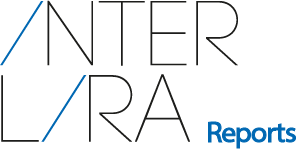The Monetary Policy Committee (Copom) of the Central Bank decided on Wednesday (31/01) unanimously to reduce the basic interest rate (Selic) by 0.5 percentage points, to 11.25% per year, and maintain the signal for cuts of the same magnitude in the next meetings. In this way, the committee preserves the pace of monetary easing applied since August last year.
This Content Is Only For Subscribers
To unlock this content, subscribe to INTERLIRA Reports.
Indications
Among the excerpts, that Copom decided to keep in the text released on Wednesday (31/01) is the one that defends that the government pursues the targets for the public accounts already presented.
Among the few news brought about in the December statement, Copom added, when analyzing the external environment, that the current situation is marked by the debate about the beginning of the fall in interest rates in the main economies.
International Reserves Rise
Brazil’s international reserves rose in the first year of Luiz Inácio Lula da Silva’s (PT) government and closed 2023 at US$355 billion, which represents an increase of 9.34% compared to a year earlier and the highest level since March 2022. The movement is observed after a 13% drop during the administration of his predecessor, Jair Bolsonaro (PL).
The increase was driven by the positive exchange rate flow – the highest since 2012, with a net inflow of US$ 11.49 billion – and by the income obtained from interest on the bonds in which Brazil’s reserves are invested, largely allocated in Treasuries (bonds of the United States Treasury).
Analysis:
The current economic situation prompts emerging countries, particularly Brazil, to adopt a cautious stance amidst a disinflationary trajectory. Despite progress, global inflationary pressures and the persistent resilience in services inflation pose ongoing risks. The gradual deceleration in disinflation, coupled with only partial re-anchoring of inflation expectations, emphasizes the necessity for a measured approach in executing monetary policy and navigating the complexities of a challenging global backdrop. It is crucial to maintain serenity and moderation in guiding monetary policy, persevering with a contractionary approach until both the disinflation process solidifies and expectations firmly anchor around established goals.
In anticipation of a recent meeting, analysts foresaw a 0.5% cut in response to prevailing inflation indicators. This move follows a previous cycle of 12 consecutive interest rate increases from March 2021 to August 2022, addressing spikes in food, energy, and fuel prices. Subsequently, the rate was frozen at 13.75% per year until August of the preceding year. Economists suggest that the current conservative stance allows room for additional cuts throughout the year, reflecting a strategic balance between economic realities and the imperative to sustain disinflationary momentum.




